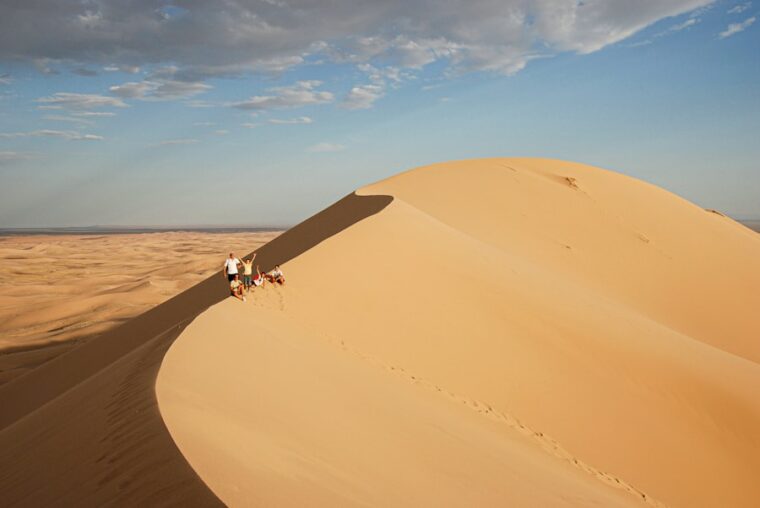Mongolia’s nomadic lifestyle has long been a source of fascination for people around the world. The idea of living in harmony with nature, moving with the seasons, and experiencing a sense of freedom and independence is incredibly alluring. The vast open spaces, the rugged beauty of the landscapes, and the rich cultural heritage of the nomadic people all contribute to the appeal of this way of life. For many, the nomadic lifestyle represents a return to a simpler, more authentic way of living, free from the trappings of modern society. The opportunity to disconnect from the hustle and bustle of urban life and reconnect with nature is a powerful draw for those seeking a more meaningful and fulfilling existence.
The nomadic lifestyle also offers a sense of adventure and exploration that is hard to find in more settled societies. The constant movement, the ever-changing landscapes, and the close connection to the natural world create an environment that is both challenging and exhilarating. For those who crave a life less ordinary, the nomadic lifestyle holds a unique appeal that is difficult to resist. The opportunity to experience a way of life that has remained largely unchanged for centuries is a rare and precious gift, and one that many people are eager to embrace.
The traditional customs and practices of Mongolian nomads
Mongolian nomads have a rich and vibrant culture that is deeply rooted in tradition and custom. From the way they dress to the way they raise their livestock, every aspect of their lives is steeped in tradition. One of the most iconic symbols of Mongolian nomadic culture is the ger, or yurt, which serves as their traditional dwelling. These portable, round tents are well-suited to the nomadic lifestyle, as they can be easily dismantled and moved to a new location. Inside the ger, you will find colorful rugs, intricate wood carvings, and other traditional decorations that reflect the nomads’ deep connection to their heritage.
The nomads’ close relationship with their livestock is another key aspect of their traditional way of life. They rely on their herds of sheep, goats, horses, and camels for food, clothing, and transportation, and have developed a deep understanding of how to care for and manage these animals. The nomads also have a rich tradition of horsemanship, with horseback riding playing a central role in their daily lives. In addition to their practical uses, horses hold a special place in Mongolian culture, with traditional horse racing and wrestling events being important social and cultural gatherings for the nomadic communities.
Exploring the vast and diverse landscapes of Mongolia
Mongolia’s landscapes are as diverse as they are breathtaking, offering a wide range of natural wonders to explore. From the rolling grasslands of the steppes to the rugged mountains of the Altai Range, there is no shortage of stunning scenery to take in. The Gobi Desert, one of the largest deserts in the world, is another must-see destination for nature lovers, with its towering sand dunes, rocky canyons, and unique wildlife. The country’s many rivers and lakes provide ample opportunities for fishing, boating, and other water-based activities, while its dense forests are home to a wide variety of plant and animal species.
For those seeking adventure, Mongolia offers plenty of opportunities for outdoor activities such as hiking, horseback riding, and camping. The country’s vast open spaces provide ample room for exploration, with countless trails and paths waiting to be discovered. Whether you’re an experienced outdoors enthusiast or just looking to reconnect with nature, Mongolia’s diverse landscapes offer something for everyone.
The challenges and rewards of living a nomadic lifestyle
Living a nomadic lifestyle comes with its fair share of challenges, from harsh weather conditions to the constant need to move in search of fresh pasture for livestock. The nomads must be resourceful and adaptable in order to survive in such a demanding environment. They must also be skilled at working with their hands, as many aspects of their daily lives require manual labor, from building and repairing gers to crafting tools and household items from natural materials.
Despite these challenges, there are many rewards to be found in the nomadic lifestyle. The close connection to nature, the sense of freedom and independence, and the strong community bonds all contribute to a rich and fulfilling way of life. The nomads take great pride in their ability to live off the land and care for their herds, and they have developed a deep appreciation for the natural world that sustains them. For those who are willing to embrace the hardships and uncertainties that come with living a nomadic lifestyle, the rewards are immeasurable.
Immersing oneself in the rich culture and history of Mongolia
Mongolia has a long and storied history that is deeply intertwined with its nomadic culture. From the time of Genghis Khan and the Mongol Empire to the present day, the country’s history is filled with tales of conquest, exploration, and cultural exchange. The nomadic people have played a central role in shaping this history, with their traditions and customs serving as a link to the past that continues to thrive in the modern world.
Visitors to Mongolia have the opportunity to immerse themselves in this rich cultural heritage by participating in traditional activities such as horseback riding, archery, and attending local festivals. They can also visit historical sites such as ancient monasteries, archaeological ruins, and museums that showcase Mongolia’s fascinating past. By engaging with the local people and learning about their customs and traditions, travelers can gain a deeper understanding of Mongolia’s unique cultural identity.
The impact of modernization on Mongolia’s nomadic communities
In recent years, Mongolia has undergone significant changes as a result of modernization and urbanization. As more people move to cities in search of economic opportunities, traditional nomadic communities are facing new challenges that threaten their way of life. Climate change, overgrazing, and competition for resources are putting pressure on the nomads’ ability to sustain their livelihoods, while rapid development is encroaching on their traditional lands.
At the same time, modernization has brought new opportunities for the nomadic communities, such as access to education, healthcare, and technology. Many young people are choosing to pursue higher education and careers in urban areas, leading to a shift in traditional family structures and social dynamics. As Mongolia continues to modernize, it is important to find ways to support and preserve the unique cultural heritage of its nomadic communities while also addressing the challenges they face in a rapidly changing world.
Tips for travelers looking to experience the nomadic lifestyle in Mongolia
For travelers who are interested in experiencing Mongolia’s nomadic lifestyle firsthand, there are several important considerations to keep in mind. First and foremost, it is essential to approach this experience with an open mind and a willingness to embrace new ways of living. Respect for local customs and traditions is crucial, as is a willingness to adapt to the challenges that come with living in a remote and rugged environment.
It is also important to be prepared for the physical demands of living a nomadic lifestyle, such as long days spent outdoors and exposure to harsh weather conditions. Proper clothing, gear, and supplies are essential for staying comfortable and safe while living in a ger or traveling through Mongolia’s diverse landscapes. Finally, travelers should seek out opportunities to engage with local communities and learn from their experiences, whether through homestays, guided tours, or cultural exchanges.
In conclusion, Mongolia’s nomadic lifestyle offers a unique blend of tradition, adventure, and natural beauty that is unlike anything else in the world. By immersing oneself in this rich cultural heritage and exploring its diverse landscapes, travelers can gain a deeper understanding of what it means to live in harmony with nature. While there are certainly challenges associated with living a nomadic lifestyle, the rewards are immeasurable for those who are willing to embrace this way of life. As Mongolia continues to modernize and evolve, it is important to support and preserve its nomadic communities while also finding ways to ensure their sustainability for future generations. For those who are eager to experience this way of life firsthand, there are countless opportunities waiting to be discovered in Mongolia’s vast open spaces.


